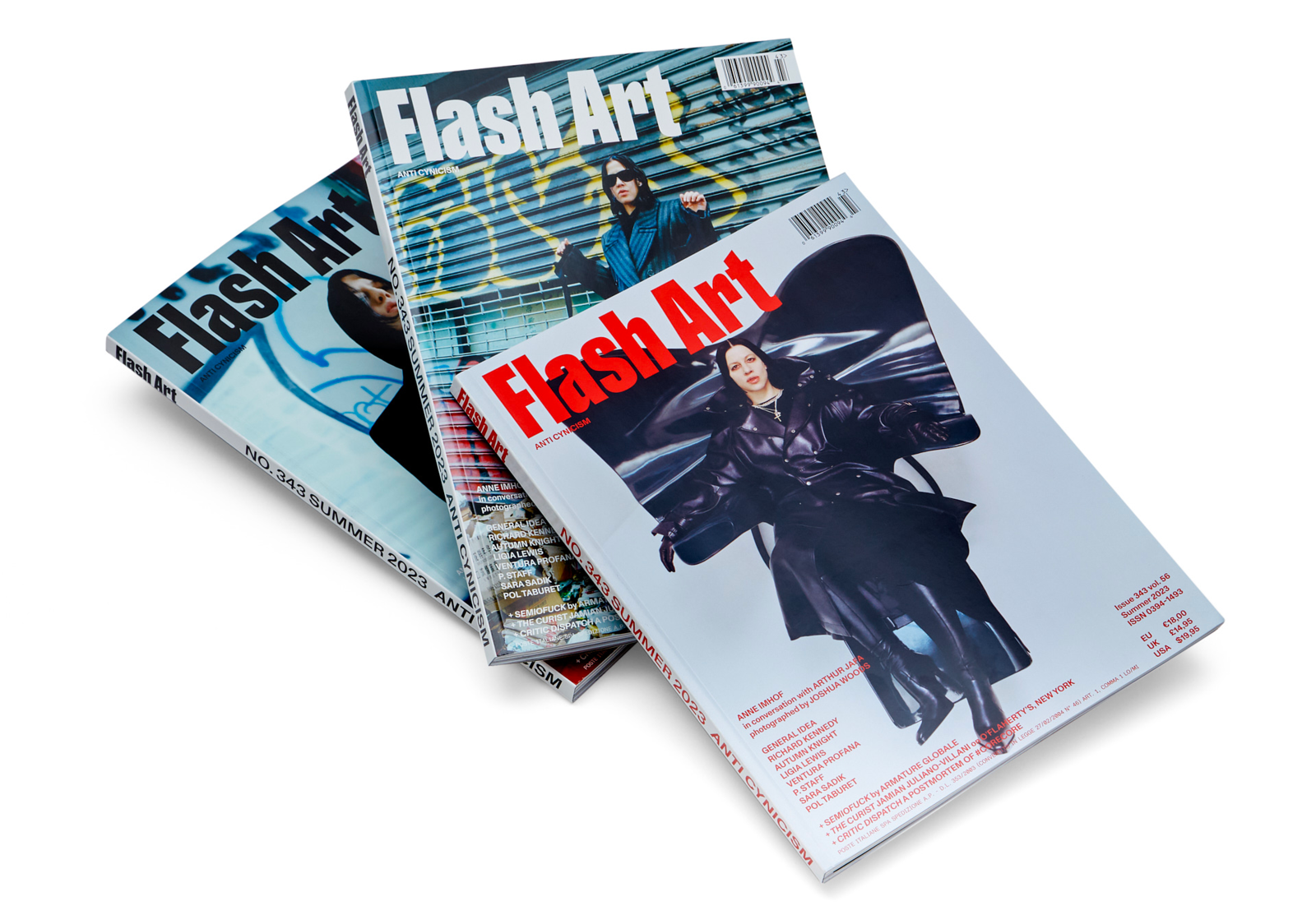“Folks don’t understand how hard it is to make a thing that has fuzzy boundaries. It’s very, very difficult to make a thing that doesn’t arrive already predigested. It’s a consequence of where we are in history.” Arthur Jafa’s words resonate meaningfully throughout this issue, as does Anne Imhof’s response: “There are layers of meaning in the images. And the images are many. Crystalized.” The question of how we relate to consumerism—our lifestyle addiction, materialist sensibility, and digital delirium—should be a constant struggle. Instead, we try to mitigate our impulses with a sort of self-flagellating self-awareness. This reflexive tendency to balance out material desire with a sense of guilt epitomizes the new definition of cynicism.
We want to focus on the opposite tendency. Titled ANTI CYNICISM, this issue features an artist whose work has been controversial since day one. As Arthur Jafa comments in his conversation with Anne Imhof, people either find her work to be the most amazing experience they’ve ever had, or else they hate it. Imhof addresses our titular theme with a special production, conceived especially for the magazine, in which, wearing Saint Laurent, she has been photographed in Berlin and New York by Joshua Woods.
Also in this issue: AA Bronson talks with associate editor Gracie Hadland about General Idea’s optimistic infiltration of networked culture, in what was a remarkably prescient understanding of social media. Ligia Lewis discusses with Isabel Parkes her politically incisive yet hopeful choreographic research. Louisa Elderton introduces us to Pol Taburet’s transformational painting practice, in which the body can be anything and everything simultaneously. Flash Art editor Eleonora Milani walks us through Richard Kennedy’s time-defying historical references, which the artist deftly navigates across multiple mediums.
Marseille-based video and performance artist Sara Sadik speaks with Ben Broome about her collaboration with Émile-Samory Fofana and her uncompromising hybrid of fiction and documentary. A visual project by Ventura Profana, with an introduction essay by Bernardo de Souza, unpacks histories of abuse, misuse, and spoliation via a kaleidoscopic digital landscape made from reworked found images.
We introduce a new column in this issue, The Curist, which looks at alternative practices in gallery culture, whether commercial or much less so. For the first episode, Whitney Mallett talks to Jamian Juliano-Villani about the incomparably eccentric New York venue O’Flaherty’s. In the latest installment of SEMIOFUCK, the ever-astute Armature Globale eulogizes modern British architects by way of Japanese techno-horror.
Letter from the City is by Autumn Knight. Divided into chapters, the artist shares her thoughts on Black things, Prince’s Charles coronation, and other existential matters. Unpack Reveal Unleash features a text by Alex Bennett on the UK-based visual and performance artist P. Staff, whose solo exhibition at Kunsthalle Basel will open this June. And finally, the pages of Critic Dispatch are dedicated to an essay and discussion by Declan Colquitt and Hannah Cobb, working under the pseudonym Y7, about the TikTok phenomenon #corecore.
Reviews
Chryssa & New York Dia Chelsea, New York by Chiara Mannarino / Barbara T. Smith The Way to Be Getty Center, Los Angeles by Emma Kemp / Ndayé Kouagou Fondation Louis Vuitton, Paris by Lillian Davies / Isaac Julien What Freedom Is to Me Tate Britain, London by Phoebe Cripps / (LA)HORDE Julia Stoschek Foundation, Berlin by Estelle Hoy / Marc Camille Chaimowicz Nuit Américaine WIELS, Brussels by João Laia / Roni Horn I am paralyzed with hope Centro Botín, Santander by Joaquín Jesús Sánchez.
The issue will be available at Art Basel.

